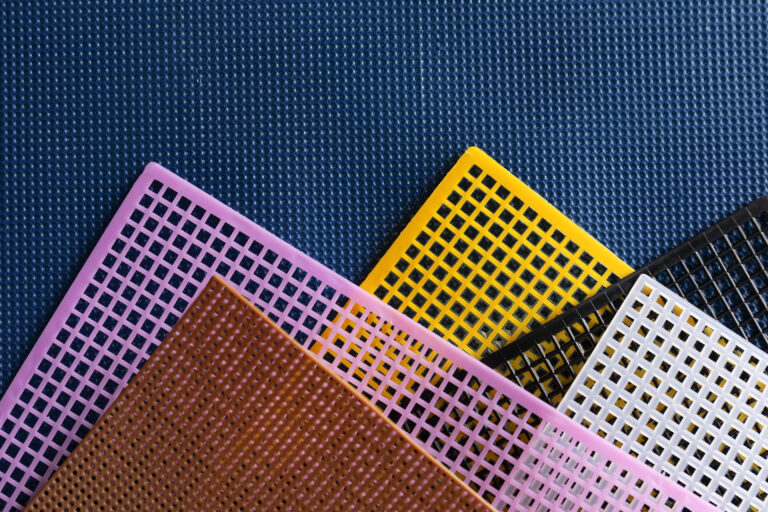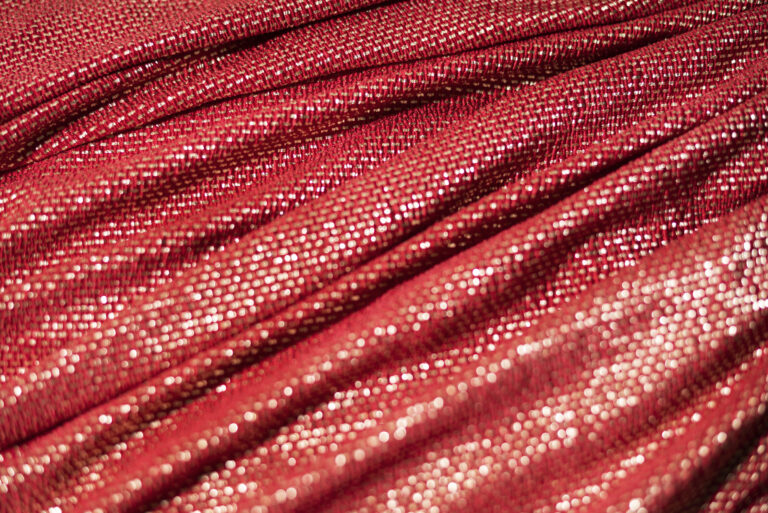Top 5 Steps for Weaving Silk Fabric like a Pro
5 Steps for Weaving Silk Fabric like a pro is what this article is about. It is an ancient craft that has been passed down through generations. In recent years, there has been a resurgence in popularity for this beautiful and luxurious fabric.
If you’re interested in learning how to weave silk fabric like a pro, then read on. This article will provide you with the necessary information and skills to get started on your journey to becoming a silk weaver.
In this top 5 steps for weaving silk fabric like a pro, you will learn the top steps to begin creating your own stunning silk fabrics at home or at workplace. So, what are you waiting for? Let us get started.
What is Weaving Silk Fabric
It is a textile production method in which two unique sets of yarns or threads are intertwined at right angles to make a fabric or cloth. Other techniques include felting, knitting, crocheting, and braiding or plaiting.
The lateral threads are known as the weft, woof, or filler, while the longitudinal threads are known as the warp. The features of the fabric are influenced by how these threads are weaved together.
On a loom, which holds the warp threads in place while filler threads are woven through them, cloth is typically woven. Other processes, such as tablet weaving, back strap looming, or other ways that can be carried out without looms, can also be used to create a fabric band that satisfies this description of cloth.
Different Types of Weaving Silk Fabric that make you a Pro
Below are different types of weaving silk fabric that are made with various techniques that have been perfected over the centuries:
Mottled silk
This silk is created from fibers provided by the tamed Bombyx mori silkworm species, which only consume Mulberry leaves. Mulberry silk is a broad category, not a specific type of silk, and it accounts for around 80% of global silk output.
Silk Muga
This is a strong golden-yellow silk manufactured from the Antheraea assamensis silk worm, which can be found in the Indian state of Assam.
Spider Silk Fibers
These are considered to be incredibly elastic and as strong as steel, if not stronger. Spider silk’s potential for use in commerce and industry has not yet been extensively investigated.
Arachnid Silk
Spider silk fibers are considered to be incredibly elastic and as strong as steel, if not stronger. Spider silk’s potential for use in commerce and industry has not yet been extensively investigated.
Sand Silk
Long, silky threads released by mussels are used to create the fabric known as sea silk. This silk material reportedly keeps you warm and is even finer than any other silks.
Pure Silk
When making pure silk fabric, the silk strands are boiled and washed to remove the gum, but no additives are added to make up for the weight loss. The finest and purest silk is used in it.
5 Steps for Weaving Silk Fabric like a Pro
If you’re looking to get into the silk-weaving business or simply want to make your own fabric at home, here are 5 steps that can turn you into a pro:
1. Spinning
The silk is brought for spinning after it has been dyed. Yarn is bundled and set on the spinning wheel. The wheel is spun as the silk strand is reeled to the spindle. Spindles receive the yarn from a huge hank or Charka-spinning wheel. Later, these spindles are inserted into the fly-shuttle, which is utilized during weaving.
2. Warping
To prevent the color of the silk yarn from fading, warping is best done in the early morning hours outside. The yarn is stretched after being connected between the two poles. Checks are made for yarn entanglements, and breaks are tied. Since it is simple to identify the tangled silk strands, a cotton thread is woven into the warp.
3. Setting the Loom
Before beginning the weaving process, the loom must be set. After warping, the yarn is prepared into warp sheets by being wound around an iron rod. Beaming is the action of converting the warp sheet into a weaver’s beam.
The yarn strands flow through the reeds and hemp throughout this procedure. Each silk strand is carefully sewn to the old warp threads to accomplish this. The joining process takes close to two to three days to complete. In the family, joining is typically done by women.
4. Computer-Aided Design Process
Technology is used in the computerized design process as well as in the making of silk saris. The conventional design procedure has been superseded by the automated design method. The motif’s image is first scanned, after which it is traced and bitmap-filled.
The image is finally written to the punch cards. The punch cards are now fed into the jacquard machine in the shape of a chain and the weaving process may begin. This automated procedure is easy and efficient.
5. Process of Weaving
Fly shuttle pit looms are used for weaving. The weaver weaves together the warp and weft threads of silk. The shuttle moves through the openings created when the pedal is depressed, interlacing the warp and weft threads.
The suspended sley is pulled to create the weave once the shuttle has been passed. The wooden beam in front of the weaver is injured by the proton of weaved cloth.
Popular Silk Weaves
The silk weave is a fabric made from the fibers of the silkworm, each with its own unique characteristics. The most popular silk weaves include:
Habuta
In China and Japan, it is the emblematic cloth with the longest history. Habutae is an unthrown silk plain-weave fabric that, in theory, employs wet yarn for the weft. Scarves, mufflers, blouses, high-end underwear for men, lining for women’s clothing and upholstery, ground material for chemical shoes, and industrial material for the coating of electric wires are just a few of the many uses for it.
There are 27 different habutae variations listed in the specs; the majority of these fabrics are now produced in China.
Another type is the twill variety, which, like plain habutae, employs unthrown yarn for the warp and weft. One characteristic of the fabric is that its surface is smooth and somewhat more shiny than conventional habutae, and its texture runs obliquely.
The primary applications for twill habutae include lining for high-end men’s and women’s clothing as well as scarves, mufflers, dresses, blouses, and neckties.
Crepe
It is a thin, simple fabric made from thrown yarn that resembles nylon and chiffon. This fabric features delicate crinkles and resembles georgette crepe, yet it differs in its soft feel due to its unusual weaving of thrown yarn. It is used for linings, dresses, blouses, and scarves for high-end women’s clothing.
Satin
There are two types of satin weaves: raw silk satin and pure silk satin. The former is a satin-woven fabric made with raw silk for the warp and weft, and the latter is a satin-woven fabric made with fully glossed silk yarn for the warp and weft.
Specifications state that there are 13 different types as well as numerous fancy weaved products, such as figured satin crepe. There are several applications for satin, including scarves, mufflers, gowns, neckties, and lining.
Shantung
It is a plain weave silk fabric with dyed dupion for the weft and raw, degummed, and dyed silk for the warp. The distinctive feature of this fabric is how it creates thick, wavy lines in the weft using the slubs of dupion silk, giving it a sheer appearance of elegance.
Shantung may also be made to look beautiful with the right handling and design.
Faille
It is a fine plain weave yarn-dyed fabric with Tauri yarn used for the warp. Following World War II, there is a greater need for faille.
It was initially constructed of 24 momme or more, but because to technological advancements and innovative weaving techniques, the variations are now up to 20 momme.
Back satin faille and figured faille are two fancy kinds that are all utilized for premium silk textiles. Dresses and high-end women’s clothing are made with it.
Organdy
This fabric is not scoured after weaving and is of the plain-woven form. It is thinly woven with twisted yarn that has been dyed silk. Although the fabric itself is thin, it has a different light feel from habutae, satin, or crepe.
Originally made of unthrown yarn, organdy is now produced using thrown yarn as a result of changes in its applications and rising consumer demand.
Organdy comes in a wide range of elegant variations, including figured and checkered. End uses for organdy include garments, lining, cushioning, and even decorative material.
The amount of unwoven warp that is purposefully left before and after the weaving of the sari, and is then woven into 6 yards of weft, is afterwards knotted for fringe.
After smoothening the sari with a brass metal blade and folding it traditionally for the market, the weaving process is complete.
One sari takes over 4 to 5 days to complete. Ten saris’ worth of warp are loaded into the loom at once. The weaver can need one or two people to assist him while he works.
Conclusion
Following these top 5 steps for weaving silk fabric like a pro will help improve your weave skill. First, select your silk thread. Second, set up your loom.
Third, weave the warp threads. Fourth, weave the weft threads. Finally, finish your fabric. With a little practice, you’ll be able to create beautiful silk fabrics that are perfect for a variety of projects.


